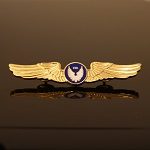FORUM › Forums › Software › CLS2SIM Software › Flight Simulation Software › Microsoft Flight Simulator 2020 & Brunner Hardware › MSFS 2020 Support Update 08.01.2021
Tagged: MSFS 2020, Rudder Pedals, SimConnect, USB
- This topic has 174 replies, 61 voices, and was last updated 3 weeks, 3 days ago by
rickolson.
-
AuthorPosts
-
24/06/2021 at 20:05 #2460
severniae
ParticipantThanks, yes this is what I was referring to. When holding the yoke stationary while using the trim, the force on the yoke should change, but the attitude of the aircraft should not.
This never worked in P3D. I will try it on MSFS.
02/05/2022 at 02:04 #2726rogeryung
ParticipantHi, new user of the CLS E yoke and rudder pedals. I was wondering is there a way to get some kind of force feedback on landing in MSFS 2020? I played with ground effects but nothing seems to happen. I was hoping that I would feel some kind of vibration or other effect on touchdown
Regards
Roger04/05/2022 at 17:35 #2730maxam
Participant04/05/2022 at 18:19 #2731 webmaximusParticipant
webmaximusParticipantHello Robert,
I’m sorry but I don’t have any 737 profile installed anymore nor do I have any screenshots. This since I haven’t been flying the 737 NG for a long time now after moving over to MSFS from X-Plane. However, with the PMDG 737 for MSFS just around the corner, I guess it’s time to dig out and dust off my old 737 profiles soon again 🙂
What I can do is download my latest profile for the Zibo mod locally and
send it to you if you give me your email address. Just realized I can attach it directly here instead. Not sure if you’ll be able to use it though since we don’t have the same model of the yoke.Cheers,
Richard
Attachments:
You must be logged in to view attached files.04/05/2022 at 21:04 #2733maxam
ParticipantHi Richard,
Thanks very much for posting your profile, it loads into the CLS Profile Manager so I will give it a try. I’m still using X-Plane quite a bit and of course MSFS but I imagine that I will use MSFS a lot more when the PMDG 737 is released. I do like the FlyByWire A32x, I bought the full A320 setup so I enjoy flying it with the appropriate gear.
Thanks again,
Robert04/05/2022 at 23:47 #2734 webmaximusParticipant
webmaximusParticipantNP Robert, happy to hear you were able to use the profile!
11/07/2022 at 18:23 #2780avantime
ParticipantAh, the Flight Director repeatedly turning on and off every second or so – I thought it was just me, no sign of this on the internet anywhere! I did wonder whether it was a Brunner yoke/rudder related problem.
Any possible fix for the flight director bug? It keeps turning on and off when the yoke (CLS-E MkII) is connected to MSFS.
07/09/2022 at 12:42 #2850mrscott
ParticipantStephen ET AL,
.One of the many features I love about the Brunner Yoke (MKII) is in many planes, C172, TBM900, the Yoke mirrors the movement of the yoke in the Sim. However, this is not the case with the PMDG 737-700 in MSFS2020. The yoke in the Sim moves while in Autopilot but the Brunner does not. A very trusted friend (engineer) made the Boeing Profile for me and posted it on the cloud. If I recall correctly he stated because the Boeing is Hydraulic the yoke should not move. Okay, so is the Sim not functioning correctly? The beauty of feeling every bump of air that affects the plane through the Yoke (and pedals, where applicable) is the whole point of FFB or Control Loaded Devices (IMHO). I would very much appreciate you thoughts, feedback and or suggestions on settings to gain the effect I am after.Bless you all,
Scott
07/09/2022 at 12:55 #2851 webmaximusParticipant
webmaximusParticipantThe yoke indeed moves with the AP enabled in the real aircraft.
Reason it doesn’t move in the PMDG 737 in MSFS is PMDG used custom code which isn’t supported by Brunner and won’t be since PMDG haven’t even cared to respond when Brunner have reached out to them.
So there you have it. Sorry I didn’t have better news to share.
05/03/2023 at 13:52 #3022wdrecker
ParticipantI would like to refer to the elevator trim topic, serverniae posted 24. June 2021 at 20:05.
I tested following two elevator trim options available in CLS2Sim with MSFS (referring to online help \ CLS profile manager \ Buttons):
Option 1: Select Not bound / USB Button in CLS2Sim and set trim up in the simulator.
Option 2: Use the Trim – Elevator up (or down) in CLS2Sim; this uses software to adjust the trim.
Accordingly, I configured the elevator trim settings in MSFS for option 1 or disabled them in MSFS for option 2 and did different tests over the entire trim range to check realistic position-, force and attitude-behavior. For trim option 1 and 2 the result was the same:On-Ground-Tests:
Adjust trim range from full nose down to full nose up:
a) Force Feedback Stick released: Neutral position follows trim position; correspondingly, the elevator position in MSFS follows the trim position.
b) Force Feedback Stick held in neutral position: Hand forces increase or decrease according to the current trim position; accordingly, the elevator position in MSFS does not follow trim position.=> In both cases, this simulation behavior meets the expectation and corresponds to real behavior of aircraft with elevator trim systems pre-tensioned by springs. It is different for aircraft using Flettner trim flaps or variable horizontal stabilizers as elevator trim system.
In-Flight-Tests:
Adjust trim range from full nose down to full nose up:
a) Force Feedback Stick held in neutral position: Hand forces increase or decrease according to the current trim position; accordingly, the elevator position in MSFS does not follow trim position.
BUT: The aircraft experiences significant attitude changes according to trim position, although elevator remains in neutral position.=> This simulation behavior absolutely does NOT correspond to the expected flight behavior in reality!
Finally this reflects the expected behavior of MSFS, which was made for the impressions with a non-force feedback stick, in order to reproduce attitude changes with such a stick, without being able to change the neutral position of the stick.Conclusion:
Both basic trim options behave identically, which is due to the behavior of MSFS, which does not know force feedback sticks and must readjust attitude changes during trimming regardless of the stick position!
This effect is hardly noticeable with small trim changes, as they are usually used in practice. At the limits, however, the behavior is no longer realistic and can lead to a total loss of control, since the elevator deflections to compensate for extreme load changes at maximum trim deflections may no longer be sufficient to control the aircraft. This does not correspond to reality at all!Remark:
The third elevator trim option described in the CLS2Sim online help \ CLS profile manager \ Buttons was not tested as it was not available in CLS2Sim for unknown reason:
Option 3: Use Trim HW – Elevator up (or down) in CLS2Sim; this uses hardware functionality in the yoke controller to adjust the trim.
Probably this option could solve the problem identified and provide more realistic simulation behavior – even is this will leave the simulator “blind” to the stick trim setting. Unfortunately, I did not get any response from Brunner Helpdesk yet why this option is missing.Does anyone have other elevator trim experiences with MSFS?
29/03/2023 at 21:31 #3070mofa
ParticipantRe: elevator trim
My settings are as follows:
1- msfs2020: no key assignment
2- CLS2Sim: button 9: Trim elevator down
button 10: Trim elevator up
3- CLS2Sim: Trim tab: enable pitch and roll
Trim compensation and hardware trim: not enabledTest 1: propeller aircraft on-ground with throttle idle: trim nose up or down affects the trim wheel and the trim surface but no effect on the yoke due to absence of air flow on the elevator and trim surfaces.
Test 2: propeller aircraft on-ground with throttle high enough to move the yoke to neutral position with the brakes on: pulling on the yoke backwards followed by nose-up trimming relieved the pressure on the FINGERS associated with resetting of the yoke to the pulled position, conversely, pushing the yoke forward followed by nose-down trimming relieved the pressure on the HAND associated with resetting of the yoke to the new pushed position
Test 3: repeating test 2 in flight produced similar results
I believe that this what occurs IRL. Actually this is the first time for me to be able to trim accurately in simulators after almost three decades of simming with non-ffb joysticks and yokes.
14/07/2023 at 19:40 #3155sleepy81
ParticipantSeriously considering a NG or MkII yoke for use with MSFS, and trying to understand the capabilities and limitations in that use case. But I’m struggling to find the correct info as is seems a lot of early issues has been fixed etc. so have some questiones. 🙂
1. Is it possible to have the trim work correctly? I.e able to trim off the force as in real life, and still have trim wheels/indicators move in the simulated cockpit?
2. Does it work correctly with autopilot, i.e. moves when it should (and the movement does not force an AP disconnect unless I move it myself.
3. Having experience from sim racing wheels (both old belt wheels and powerful DD wheels), 40nm linear and 1.7nm rotatinal torque seems very low on the NG yoke. Have anybody tried both the NG and the MkII and can weigh in on the difference? The dimensions of the NG fits my rig a lot better than the MkII, but worries that it would be too weak, especially in roll…
3. Any addon planes in MSFS that does not work properly? Manly fly PMDG737, Justflight Archers, Milviz 310 and the Flightsimwares C414 as well as the Black Squares overhauls. Oh, and the Fenix, even though I does not use a yoke…. 🙂
4. What significance does the fact that Bruner now support DirectX FFB have in MSFS? Will it not require additional software, or is it just something that is applicable for other sims?
16/07/2023 at 22:59 #3160mofa
Participant1- 1. Is it possible to have the trim work correctly? I.e able to trim off the force as in real life, and still have trim wheels/indicators move in the simulated cockpit?
yes, see my previous post on 29/03/2023
2- Does it work correctly with autopilot, i.e. moves when it should (and the movement does not force an AP disconnect unless I move it myself.
yes,
3- Having experience from sim racing wheels (both old belt wheels and powerful DD wheels), 40nm linear and 1.7nm rotatinal torque seems very low on the NG yoke. Have anybody tried both the NG and the MkII and can weigh in on the difference? The dimensions of the NG fits my rig a lot better than the MkII, but worries that it would be too weak, especially in roll…
I have the MKII so I can’t answer your question. But I have Simucube 2 Sport and I can tell you that the the concept of ffb in racing is different from flying, i.e. in driving you need stronger forces to gives you cues about road surface, traction loss, etc. However in flight you don’t need as much strong forces for the rotational axis which reflect turbulence and wind. You don’t need to be fighting the yoke and much less force is required to give you cues about turbulence and wind especially since you will be flying most of the time with only one hand on the yoke and the other on the throttle.
3- Any addon planes in MSFS that does not work properly? Manly fly PMDG737, Justflight Archers, Milviz 310 and the Flightsimwares C414 as well as the Black Squares overhauls. Oh, and the Fenix, even though I does not use a yoke…. 🙂
It works perfectly for the PMDG, Milviz, C414 and Black Square overhauls. I don’t have the Fenix so I can’t tell how it functions, however, for Airbus you don’t need ffb since it’s FBW.
4. What significance does the fact that Bruner now support DirectX FFB have in MSFS? Will it not require additional software, or is it just something that is applicable for other sims?
I don’t know since I never used the DirectX.
18/07/2023 at 10:31 #3163sleepy81
ParticipantThanks for the reply!
With regards to point 1: could not see if the indicators in cockpit match the trim in your original response. I understand that using HW trim it feels correct when trimming (trim to relive pressure), but does that also update the trim indications in game? Or will they be stuck as HW trim does not communicate with the sim?
2. I have a Fanatec DD2 and while I certainly will not need 25NM of torque on a yoke, I just can’t help myself thinking “1.7nm is reeeally low!” 😅 But looking at the few sources out there most people seem to think it’s plenty, so it’s probably ok. 🙂
3. Don’t need FFB on the Fenix per say, but would need some type of resistance, and also AFAIK when the AP is on in the A320 the stick is “soft locked”, so you have to put enough pressure on it to disengage AP before it moves. Would be neat to simulate this, even though it uses a stick not a yoke.
20/07/2023 at 22:39 #3171mofa
ParticipantWith regards to point 1: under the trim configuration tab in CLS2Sim software you can configure it to use either hardware trim or software trim. If hardware trim is used, the trim indication will not update. However, if you opt to use the software trim, the game trim indications will be updated just like any non-ffb yoke.
You have to keep in mind that there is a learning curve for CLS2Sim just like that of Simucube 2 TrueDrive ( I dont’ know about Fanatec) in the sense that you may start with one of the presets but later you will have to adjust some or all of the parameters according to your understanding or to your previous experience if you are a RL pilot. -
AuthorPosts
- You must be logged in to reply to this topic.

